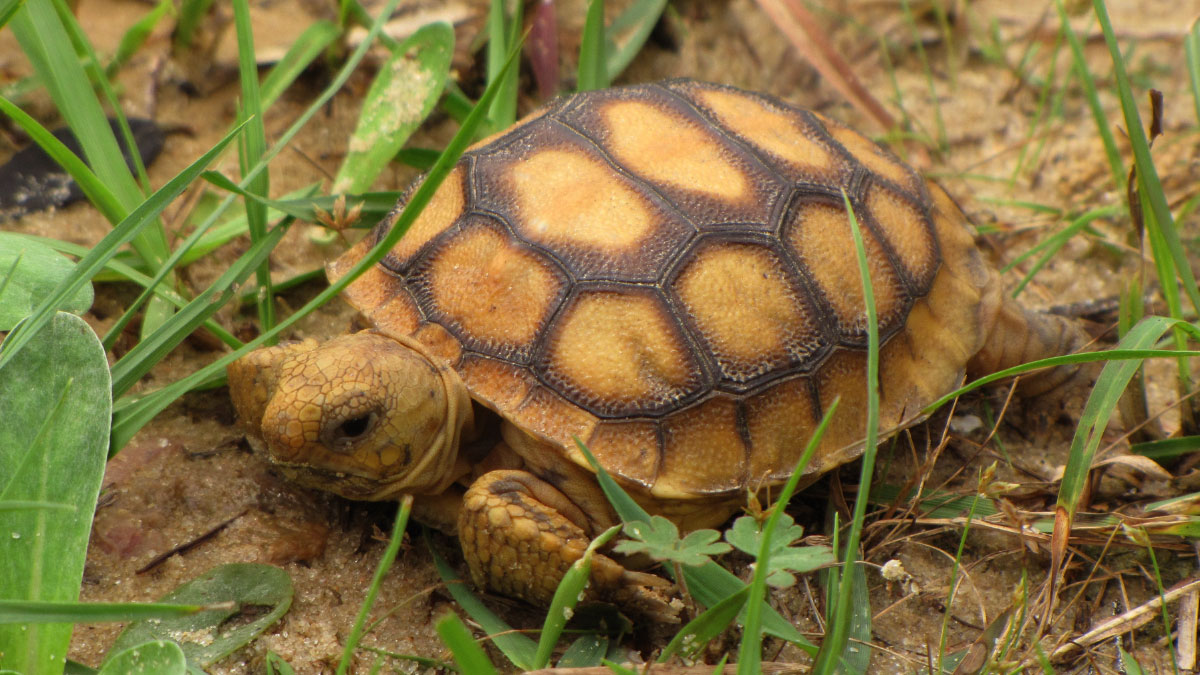Baby Gopher Tortoise Care Guide: Everything You Need to Know
Gopher tortoises (Gopherus polyphemus) are charming reptiles native to the Southeastern United States. Their dense shell, powerful front legs, and wedge-shaped heads make them well-adapted to burrowing, but caring for a baby gopher tortoise requires proper attention.
So, how do you care for a baby gopher tortoise? Provide an appropriate indoor enclosure with proper lighting, heating, and hiding places. Feed a varied diet of leafy greens, vegetables, and limited fruit while dusting food with calcium supplements. Monitor their health closely, clean their enclosure regularly, and transition them to an outdoor setup once they are large enough.
If you’re a new baby gopher tortoise parent or intend to get one, this guide is for you. Read along!
Housing Of Baby Gopher Tortoises
Contents
Young gopher tortoises require an appropriately sized, secure enclosure that mimics conditions in their natural habitat.
A vivarium-style enclosure made of glass or wood works well for baby tortoises. Start with a vivarium around 90 by 45 by 45 centimeters. This size will accommodate your baby tortoise for its first 1-2 years. As your tortoise grows, you must upgrade to a larger enclosure.
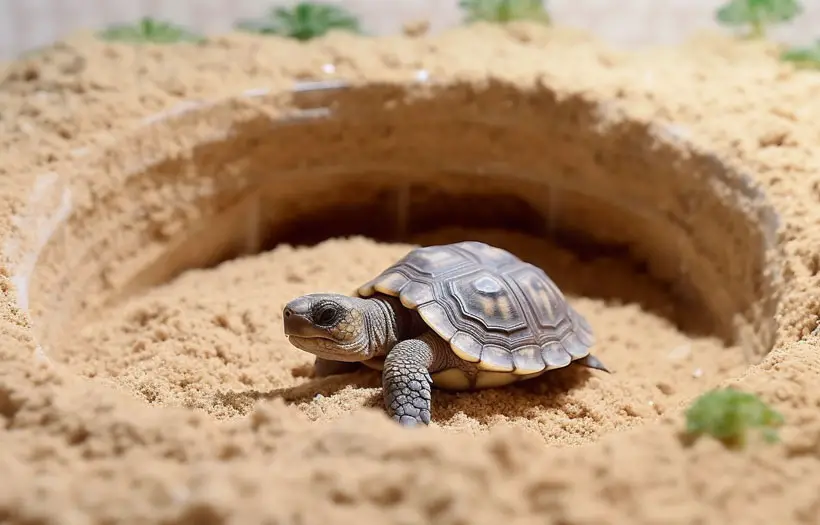
Proper heat is critical for young tortoises. Maintain 20-25 degrees Celsius during the day and 15 degrees at night. Use a basking lamp to generate the warm and a thermometer to monitor enclosure temperatures.
Add a UVB light on a timer for 10-14 hours daily. Replace the UVB bulb every 6 months to ensure adequate UVB exposure for natural behaviors and nutrient absorption.
Use appropriate substrates like alfalfa pellets, newspaper, or paper towels on the enclosure floor. Include a warm hide area and climbing structures to allow your tortoise to self-regulate its temperature and exhibit natural behaviors.
Handling
Firmly lift your tortoise by placing both hands under each side of its shell, with your fingertips supporting its body and limbs. Avoid gripping the bottom edge of the shell. Do not pick up a tortoise by its arms or legs, as this can injure it.
Hold it from a point that supports its full weight when lifting. Once done handling, thoroughly wash your hands with soap and water to remove any bacteria that could spread salmonella to your tortoise.
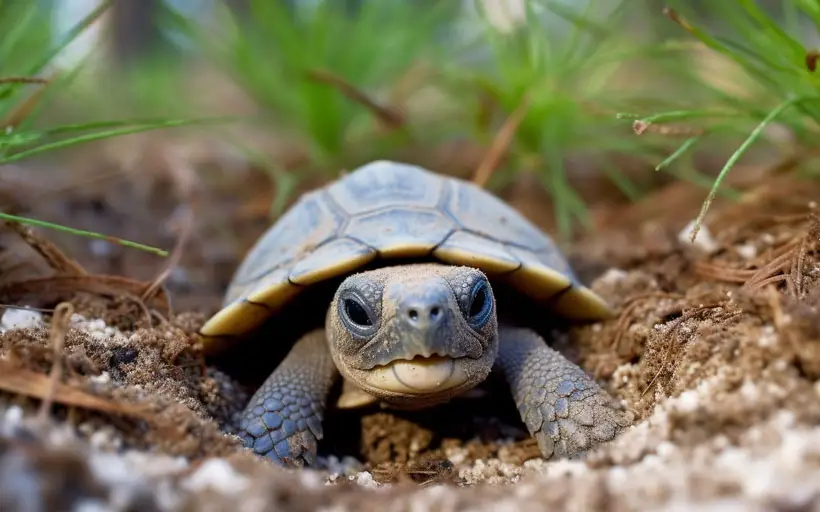
Feeding: What Do Baby Gopher Tortoises Eat?
In the wild, baby gopher tortoises have a natural diet consisting mainly of various plant matter like grasses, broadleaf plants, legumes, fruits, seeds, and forbs. Provide a wide variety of similar plant-based foods that mimic this natural range to keep your tortoise healthy.
Broadleaf grasses, wiregrass, and asters should form the base of your tortoise’s diet. Also include foods like legumes, herbaceous plants, and various plant fruits. Dust the food with a calcium and vitamin supplement 2-3 times weekly to ensure proper nutrient intake.
Additionally, provide small amounts of fruit as a treat and a constant supply of clean drinking water in a wide, shallow dish to prevent drowning.
Here is a video of grazing outdoors:
How Many Times A Day Do You Feed A Baby Gopher Tortoise?
Baby gopher tortoises should be fed once or twice per day. Since they have slow metabolic rates, they do not require frequent feeding like many other small pets.
Providing all the food they will eat within 24 hours in 1-2 sittings meets their dietary needs. Overfeeding should be avoided as it can lead to health problems.
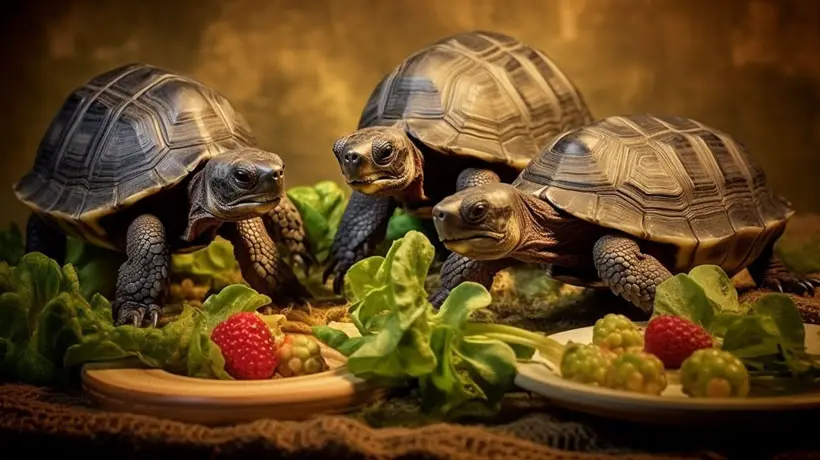
Providing Exercise And Enrichment
Though gopher tortoises receive needed movement exploring their enclosures and digging burrows, interacting with them daily helps provide mental stimulation.
In addition to hand feeding, try placing objects for them to climb over and under, like branches, logs, or boxes. Rotate these enrichment items periodically. Never place a tortoise on its back as it will struggle to self-right and could injure itself.
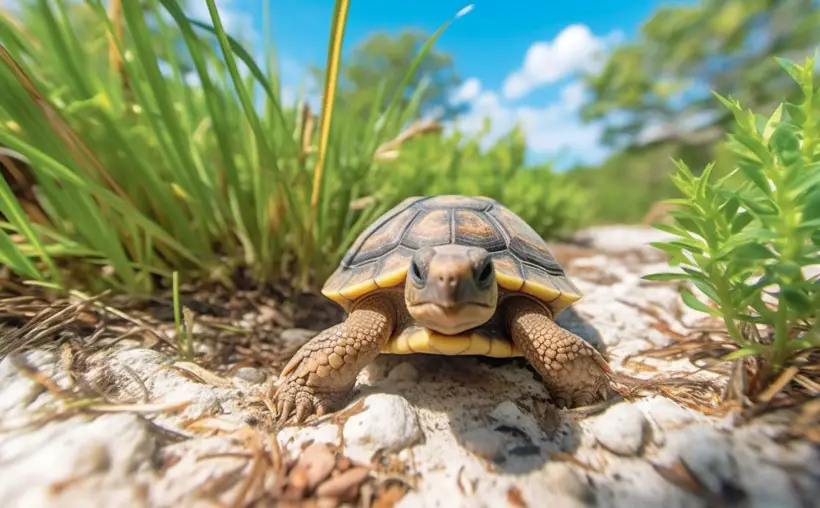
Can You Bathe Your Baby Tortoise?
Remove fecal matter from the enclosure at least every other day to minimize the spread of bacteria and viruses. Completely clean the entire vivarium and all accessories inside it every 4 to 6 weeks by:
- Removing the substrate and dropping it in a lined trash bin
- Washing all solid items with warm water and dish soap, rinsing thoroughly
- Sanitizing the vivarium walls and floor with a 10% bleach solution, leaving it on for 10 minutes, then rinsing multiple times with warm water
Health Checks and Vet Visits
Proper care results in a few health issues. Check for shell distortions or softness indicating nutrient deficiencies. Use pesticide-free plants.
Take your tortoise to the vet if it loses appetite, has abnormal waste, or when its shell reaches 10 centimeters for microchipping and outdoor housing after age 4.
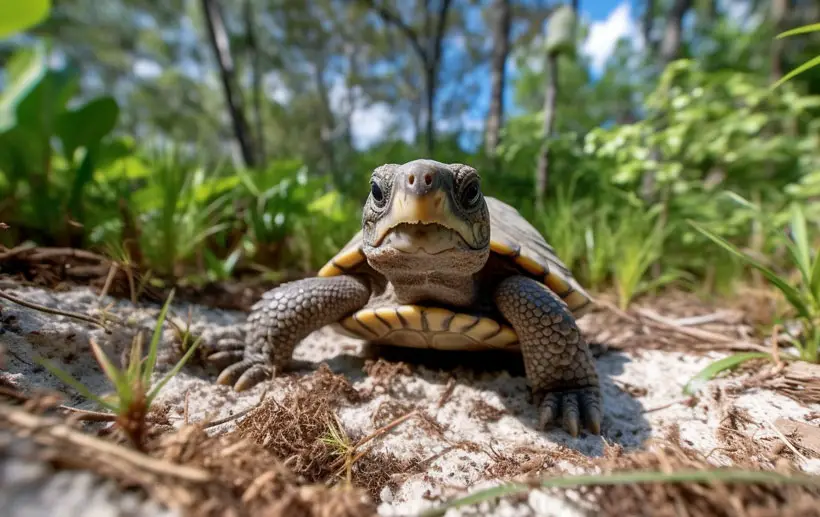
Do Baby Gopher Tortoises Need Sunlight?
Yes, baby tortoises require UVB lighting to produce vitamin D3 for calcium absorption and metabolism. If sunlight is unavailable, you can provide artificial UVB lighting for at least 10-14 hours daily.
A basking light is also needed to provide a warm area in their enclosure for proper digestion and temperature regulation.
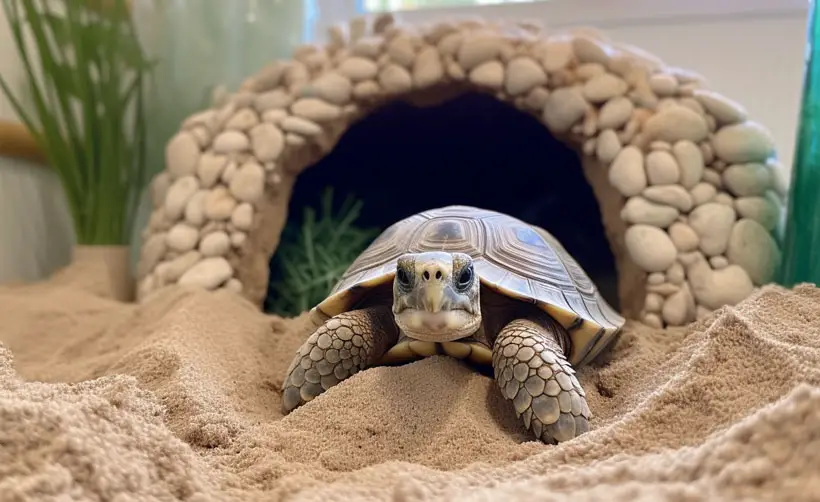
FAQs
Here are some top-asked questions you might be interested in as a baby gopher tortoise parent or enthusiast.
No, baby tortoises should not be given cow’s milk or any other mammal milk. Their digestive systems are designed for digesting plant matter. Consuming milk can lead to dehydration, diarrhea, weight loss, and other health issues for tortoises.
Yes, baby tortoises need a constant source of fresh drinking water available at all times. While they get some moisture from their food, they still need access to clean drinking water daily.
Conclusion
Caring for a baby gopher tortoise requires proper planning and dedication to providing the best habitat and nutrition source. The house set-up should include proper lighting, heating, and hiding spots. Feed your tortoise a varied diet of leafy greens, vegetables, and limited fruit while dusting food with calcium supplements.
Monitor their health closely, clean their enclosure regularly, and transition them to an outdoor habitat once they are large enough. Finally, be sure to bring them to the vet for regular health checks and vaccinations. You can provide a loving and healthy home for your pet gopher tortoise with the proper setup and dedication.

